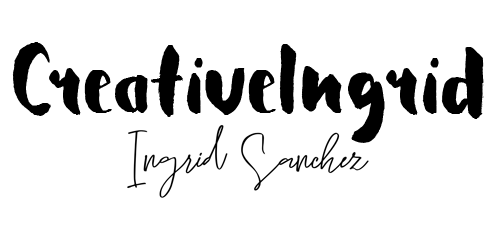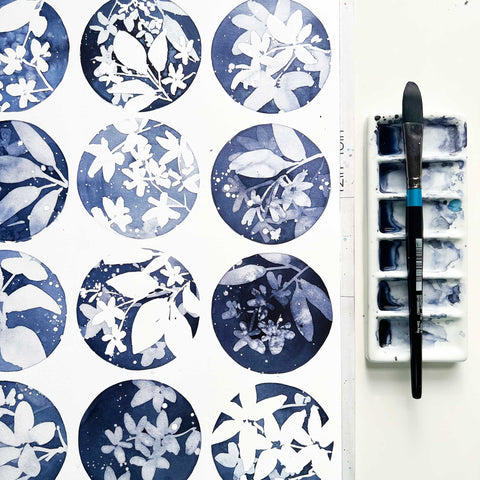Resources for artists
Tips for painting with masking fluid and watercolours
If you know me, you know that I love working with masking fluid. I use this medium in almost all my paintings, and it is very common that people ask about it when seeing my videos on Instagram or YouTube.
Here are some of the most asked questions and some tips of how to use this medium without all the hassle of ruining your brushes or paper.
What is Masking Fluid?
Also know as liquid frisket, masking fluid is a water-based medium used to repel paint and preserve white areas on the paper. This technique is very handy to keep small or complex details that would be too difficult to paint around, but is also a great way to create unusual effects that would be impossible to do by hand.
What brushes do you use to apply Masking Fluid?
Short answer: (almost) all of them! I obviously go for the not so new ones and avoid really expensive brushes. Just please don’t buy cheap brushes to throw away after using them, there is no need of that.
We all know that masking fluid can ruin our brushes, but it is all about preparing them correctly. So here is the big secret: Soap.
How to prepare your brushes before dipping them in Masking Fluid?
Mix a teaspoon of liquid soap in a glass of water and soak your brushes in every time you add more masking fluid, this will also make it easier to apply. Wash your brushes with more soap and under running water immediately after you finish applying it.
What kind of soap?
I always use liquid dishwashing soap. Alternatively you can also use a bar soap, I’ve seen other artists doing this, but because my brushes are big it's easier to work with soapy water.
What brand do you use? My masking fluid is too thick to paint.
With some exceptions, almost all brands are equally thick, but by using the soapy water on your brush you will dilute it and make it easier to work. I recommend pouring your masking fluid in a small bowl or plate instead of dipping the brush in the bottle, you can always put it back into the bottle… yes, with soap and everything.
And if you still want to know the name of the brand, it is Schmincke blue masking fluid.
Why does my paper tears when I remove it?
There are different reasons that can cause this, but the most common one is that the quality of the paper is very low. Student grade paper and thin paper don't react well to masking fluid.
Another reason can be that the paper was wet when you applied it, or it was damp when you removed it.
What is the best way to remove the masking fluid?
It depends on the amount of masking fluid used. Small areas can be removed simply by rubbing with the fingertips or an eraser. For larger areas a stiff piece of cloth can be used, you can see how I do this in my process videos.
ONLINE WORKSHOP:Introduction to painting with masking fluid & watercolors (CreativeIngrid Style)
An online beginners friendly class where I explain step by step the process of layering with masking fluid and watercolor in my signature style. You will learn the fundamentals of working with masking fluid and how to avoid the most common mistakes. |
| ENROLL HERE! |
|
|
For more detailed information and a small demo can be found on the video below. If you need more information about art supplies, you can see my recommended supplies here!
NEW ONLINE WORKSHOP:Painting with masking fluid, washes of watercolor, mixed media & textures |
 |
| An intermediate class where you will learn how to paint with layers of watercolor washes and masking fluid while exploring other mediums like acrylic inks and pigments. |
| ENROLL HERE! |


